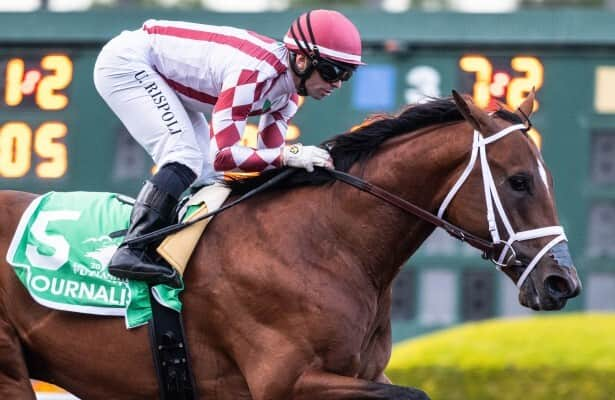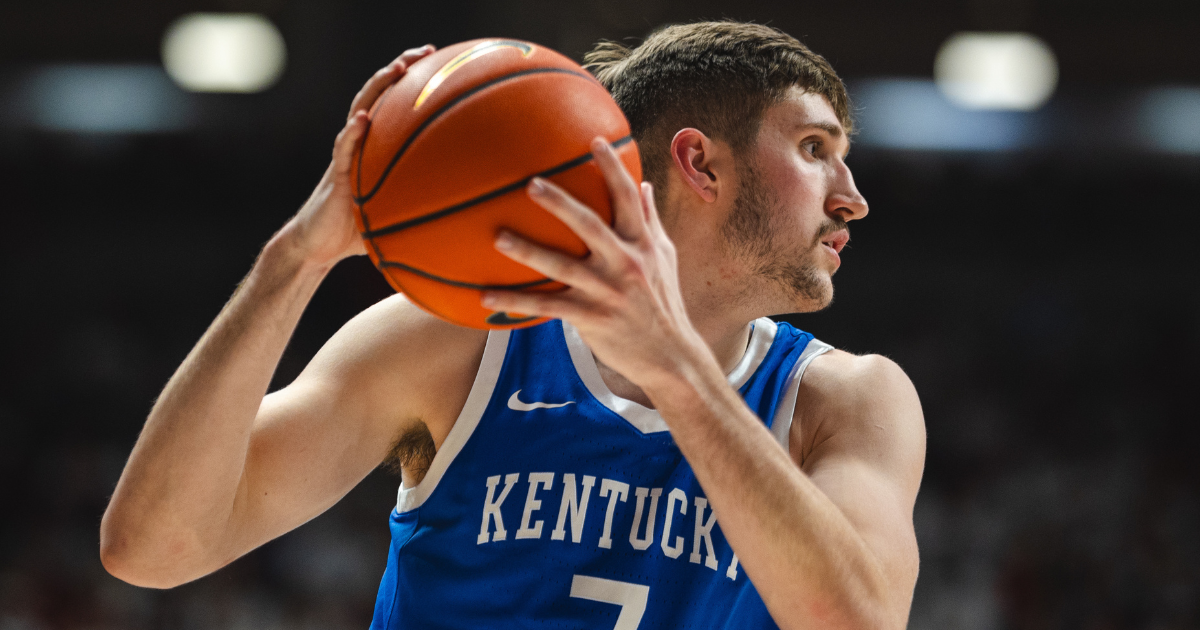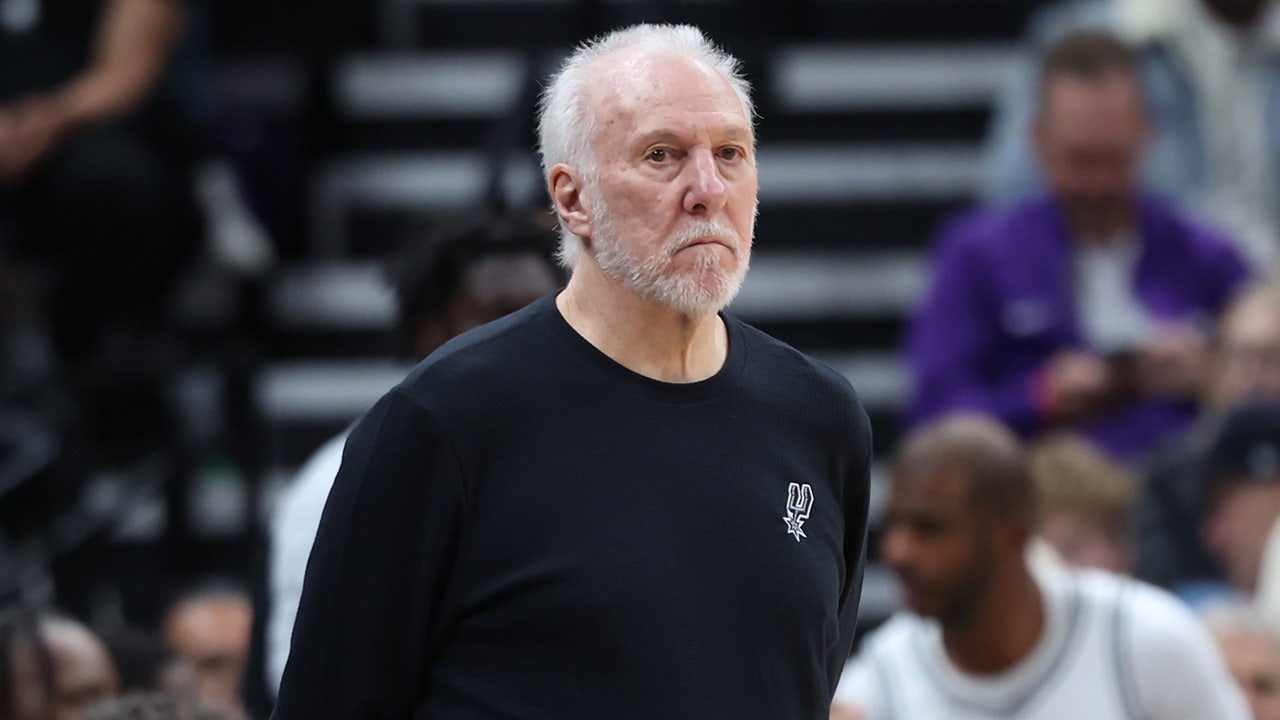Flatter: Something seems to be missing from racing parties

Five weeks before the Breeders’ Cup, and there are still 20 automatic qualifiers left to be run from sea to shining sea. That does not even count the seven that will be run on the other side of that eastern sea.
In the middle of all this, they are throwing a Pegasus style party at Santa Anita this weekend. The Goodwood Handicap cum Awesome Again Stakes has been re-rebranded as the California Crown, a Breeders’ Cup win-and-you’re-in celebration of fast horses, competitive humans and that odd species known as show biz. Can the word glitz be far behind?
Meanwhile, there is that meet in New York with the awkward abbreviation. BAQ looks more like the alarmed yelp of a frightened rooster. At least the Woodward Stakes remains constant. It is a tradition-laden race that moves into its eighth decade as a fitting memorial to the blue-blooded textile heir who used banking to parlay the family fortune and horses as more than just an expensive hobby.
Through all the shine of these objects lies one problem. One big problem. What if they threw these parades, and no horses showed up?
The Woodward, once the big stage for the likes of Kelso and Forego and Seattle Slew and Spectacular Bid and Cigar, has degenerated to a Grade 2 race that will have no more than four starters Saturday. Four. The race that Steve Asmussen used to showcase Curlin and Rachel Alexandra and Gun Runner will have none of his horses.
To think this race was worth $750,000 just five years ago and $500,000 last year. There were so few takers for the $400,000 this year that the race will be run at 1:38 p.m. EDT on Saturday. I have not exerted the effort to find out the last time the Woodward was run before the lunch dishes were cleared from the trackside dining room.
Throw more money at it, and they will come, right? Well, go west, young man along with everyone else hoping to take up the Stronachs on their party invitation this weekend. On a stage built right at the end of the horse tunnel at Santa Anita, Shaboozey will have everybody at the bar gettin’ tipsy right before they run the California Crown.
Yes, this is the race that last year was worth $300,000. Now, thanks to a big chunk of the $12.5 million that 1/ST Racing has pumped into the stakes purses Saturday, it literally feels like a million bucks. It just does not look like it. Not with a field of no more than six horses that may be teetering on five. Five.
Oh, I need to polish my lightning rod here for commenters and work in a Bob Baffert mention. Yep, he has at least half the field in the California Crown. It assuredly is not the first time he has had most of the horses in a graded, added-money stakes in Southern California.
I always ask the same question of the bleating hearts who cry that Baffert is ruining these races the same way Chad Brown destroys any given turf stakes in the east by entering one whole side of his barn. How is it their fault that these races are not filling? Why not point the finger of blame at the trainers who do not enter?
The same thing happened when Jerry Hollendorfer utterly dominated Golden Gate Fields and Bay Meadows. His critics said he was ruining the sport in Northern California. Never mind the fact he might have been most responsible for keeping it going another 20 years by showing up every day.
“People want to look for somebody to blame, so occasionally, they blamed us for that,” Hollendorfer told me right before Golden Gate closed. “I never wanted to really back off from the work that I was doing to satisfy somebody else.”
Drop the mic, Jer.
There is no doubt this problem is bigger than Baffert. The lack of outside gambling revenue is no small issue. But we are talking about California, a state that twisted not one but two ballot initiatives that, contrived as they were, aimed to add sports wagering as a legal revenue source. And not just for racing.
But they were defeated, and they were flawed, and that is fine. While the rest of the country enjoys armchair gambling in the 21st century, California can be happy with church bingo, scratch-off lottery cards and those whispered visits to casinos on tribal land.
New York, of course, has added revenue to racing. It has for years. Yet the Woodward still has only four horses going Saturday. Stakes fields this summer at Saratoga were at times alarmingly small, too.
The biggest, sneakiest problem this sport continues to face without a viable solution is the shrinking horse population. Through all the symposiums and summits and town halls, it still comes back to the languishing science of breeding.
In New York the Thoroughbred foal crop has been modest for a long time. It peaked 20 years ago when there were 2,025 newborns, about 5 percent of what North America bred. The most recent figures show that even though it fell to 1,334 in 2022, it actually represented 7 percent of the Thoroughbreds foaled on the continent.
More alarming was this. According to The Jockey Club, the average earnings per starter in New York for state-bred horses peaked 13 years ago at $81,403. In 2022, the most recent year shown in the current fact book, it had fallen to $16,034.
The picture looks bad in California, too. The number of mares bred there plummeted from 5,831 in 2003 to 1,656 last year. The state accounted for 7 percent of the continent’s Thoroughbred crop, down from nearly 11 percent two decades ago. Instead of the $54,203 that the average state-bred starter in California earned 13 years ago, it was down in 2022 to $11,337.
Those are 80 percent fall-offs for the average starter in races for state-breds on either coast since 2011. That was the year California Chrome was foaled. To think his first stakes win came against Cal-breds. Fancy that.
That also was a year when we pined for another Triple Crown winner to supposedly save the sport. We have had two since. How is that working for us?
Even if a thousand or more slot machines were rolled in right now at Santa Anita and as many more at Del Mar and Pleasanton, and even if they keep pushing casino money into the purses at Aqueduct and Saratoga and that futuristic grandstand in the making at Belmont Park, they do not solve the problem that starts with breeders.
Come to think of it, that word spiffed up with a capital B, a plural apostrophe and a Cup every November might be the clue to answering this challenge.
In the meantime, does Shaboozey take requests?
Ron Flatter’s column appears Friday mornings at Horse Racing Nation. Comments below and at RonFlatterRacingPod@gmail.com are welcomed, encouraged and may be used in the feedback segment of the Ron Flatter Racing Pod, which also is posted every Friday.
Related
Hong Kong exclusive AI play: Group 1 trifecta play looks…
Photo: Courtesy Hong Kong Jockey Club Hong Kong racing is at Sha Tin overnight Saturday into Sunday with a first post at midnight EST,
Kentucky Derby prep: Field & posts for Fountain of Youth
Photo: Scott Serio / Eclipse Sportswire River Thames, who is 2-for-2 for trainer Todd Pletcher, and Holy Bull (G3) winner Burnham Squa
Saturday tab: Thorpedo Anna’s bullet leads 61 graded winners
While her trainer Kenny McPeek and stablemate Rattle N Roll were in Saudi Arabia, 2024 horse of the year Thorpedo Anna was back at work Saturday morning, firin
Derby hopefuls: Journalism leads 13 Saturday-morning works
Photo: Jon Putman / Eclipse Sportswire Journalism, winner of the Grade 2 Los Alamitos Futurity in his last start, worked Saturday morn













